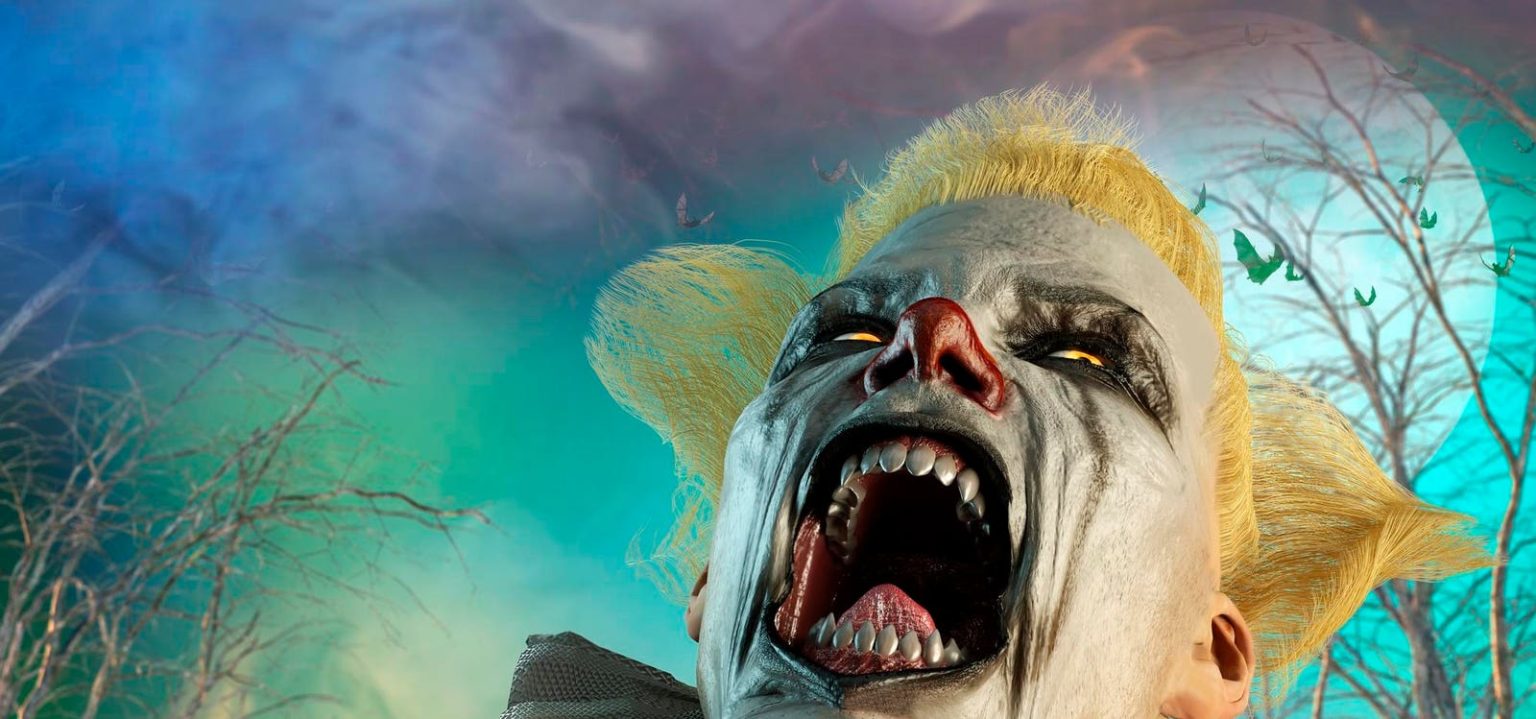If watching Pennywise in the movie “It” was utterly terrifying for you, you are not alone. A 2022 study conducted globally found that “coulrophobia” or the fear of clowns, is fairly common, with 53.5% of participants fearing clowns to varying degrees.
A 2023 study published in Frontiers In Psychology examined the origins of this fear, revealing that a clown’s appearance and behavior are the driving forces behind the discomfort and fear they evoke.
Here are three primary reasons for experiencing coulrophobia, according to the 2023 study.
1. The Uncanny Valley Effect
The uncanny valley effect refers to the discomfort or unease humans feel when presented with an artificial entity, such as a humanoid robot, that looks and acts almost, but not exactly, like a real human.
Research shows that our emotional response to human-like entities becomes increasingly positive as they become more realistic, but then sharply drops into discomfort or revulsion when they are nearly, but not entirely, realistic. This “valley” represents the point where the resemblance is close enough to be familiar but different enough to be unsettling.
Researchers suggest that this occurs because as humans, we are wired to respond positively to familiar human features and behavior, but when something doesn’t fit into the mental categories of being either convincingly human or clearly non-human, it can prompt a “sensory conflict” and feelings of eeriness.
This discomfort is magnified if the object exhibits movement, as seen in dolls, puppets or computer-generated characters. Clowns often have exaggerated facial features associated with “creepiness” such as peculiar smiles, bulging eyes and pale skin which trigger the uncanny valley response.
Additionally, humans rely on emotional cues such as facial expressions to understand whether someone is a threat. These expressions may be accentuated or obscured by clown makeup, which covers up the human color of their skin, hides their true emotions and creates a threatening state of ambiguity about their intentions.
Disgust also creates an aversion to clowns. Research suggests that we may fear clowns out of a protective instinct because elements in clown makeup, such as white faces may act as a reminder of the pallor of sickness or death whereas red noses, for instance, are reminders of infection, evoking fears of contamination. Such cues trigger an innate revulsion and avoidance of clowns.
2. Haunting Media Portrayals Of Clowns
Researchers found that negative portrayal of clowns in popular media is linked to coulrophobia. People learn to fear clowns due to overt displays of harmful and aggressive behavior, even if they are fictional.
Researchers suggest that like other specific types of phobias, coulrophobia may be a learned response. Exposure to frightening media content during formative years can have a sustained effect into adulthood. For instance, studies of medical clowns, employed to entertain young hospitalized patients, reveal that between 1 to 6% of children express apprehension towards them and this fear extends to parents (with prevalence rates between 18 to 46%) and medical staff, which may, in turn, influence the childrens’ perceptions.
The evolution of clowns from merry jesters to malevolent figures seems to lie in the plethora of terrifying media representations. From the “killer clown” trope to unnerving incarnations of possessed clown dolls (such as in “Poltergeist”) or the infamous portrayal of Batman’s nemesis, the Joker, these depictions have all ingrained a chilling association with clowns in popular culture.
Moreover, unsettling clown personas are not limited to fiction. Researchers suggest that real-life instances, such as the disturbing case of John Wayne Gacy, who hid his gruesome criminality behind a facade of clownish cheer, blur the lines between fiction and reality, further cementing the sinister perception of clowns.
3. The Trickster Archetype
Researchers found that coulrophobia also stems from the unpredictable, erratic nature of a clown’s behavior and their slapstick comedy. Often embodying the “trickster archetype,” they balance benevolence and malevolence in their acts, with sleights of hand, magic tricks or sudden pranks that trigger a vigilance for potential threats as one struggles to process the emotional signals they are projecting.
The inability to anticipate a clown’s actions or intentions is unsettling, echoing other research on arachnophobia (a phobia of spiders) that links perceived unpredictability to eliciting alarm. It is also possible that individuals feel uncomfortable around such figures since they break societal norms and behavioral taboos, enhancing the aura of unpredictability, danger and uncertainty.
Conclusion
Understanding the psychological underpinnings of coulrophobia sheds light on why something intended to amuse can inadvertently spark discomfort and has created an enduring legacy of dread. The uncanny valley effect, chilling media portrayals and inherent unpredictability of clowns trigger deeper instincts and conditioned responses that drive these fears.
Bitten by the coulrophobia bug yourself? Try the Fear Of Clowns Questionnaire to know for sure: Fear Of Clowns Questionnaire
Read the full article here





